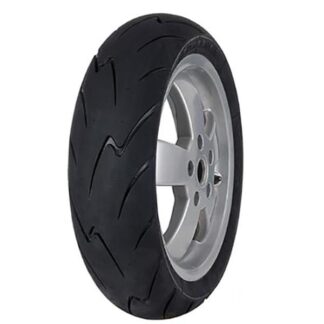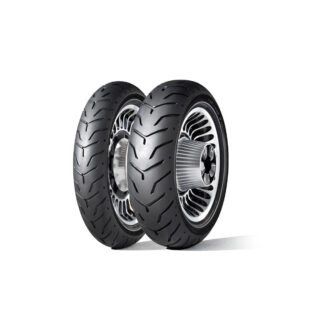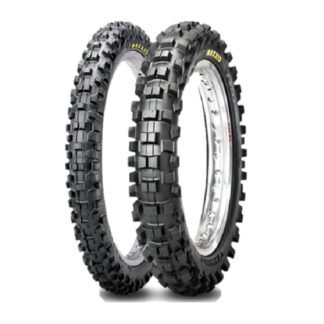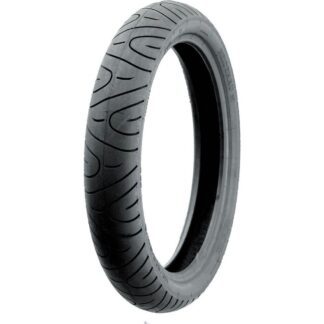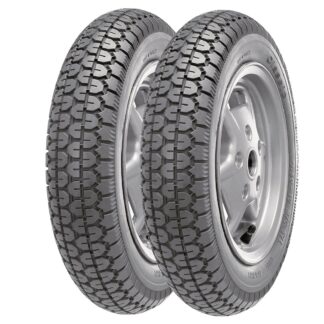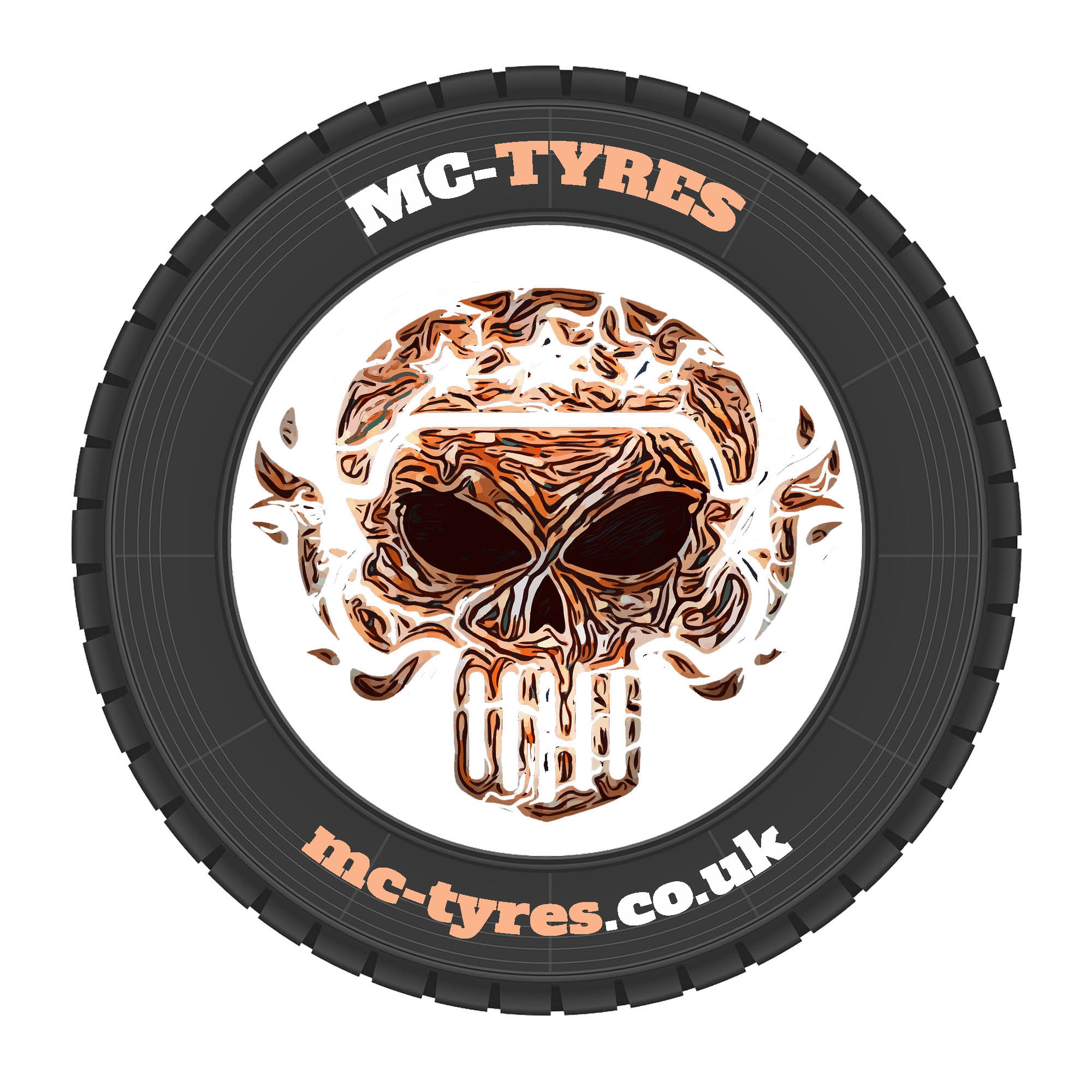The majority of riders know which tyre sizes are on their bike, but do they really know what a number such as 180/55 ZR17 M/C (73W) on a motorcycle tyre sidewall actually means?
Metzeler Roadtec01 180/55ZR-17
Metzeler = brand
Roadtec01 = model
180 = width (millimeters)
55 = aspect ratio (cross-section height is 55% of the width)
Z = speed rating (149mph or more)
R = radial construction
17 = diameter (inches)
73W = load and speedindex
WW = white wall tire
TT = tube-type tire (requires inner air tube)
TL = tubeless tire
Speed rating
You will find your speed rating on the side of your tyre. It is always represented by a letter. Typical complete mc tyre description: 120/70ZR17 (58W). Speed rating ZR – First letter is the speed rating and the second letter, if it is there, is an “R” (radial tire) or a “B” (bias tire). Lack of a second letter means it is a bias or non-belted tire. Last letter – “W” generally means higher speed rated than a standard Z rated tire.
| Symbol | Max Speed | Symbol | Max Speed | Symbol | Max Speed |
| J | 62 mph/100 kmh | K | 68 mph/110 kmh | L | 75 mph/120 kmh |
| M | 81 mph/130 kmh | N | 87 mph/140 kmh | P | 93 mph/150 kmh |
| Q | 99 mph/160 kmh | R | 106 mph/170 kmh | S | 112 mph/180 kmh |
| T | 118 mph/190 kmh | U | 124 mph/200 kmh | H | 130 mph/210 kmh |
| V | 149 mph/240 kmh | W | 168 mph/270 kmh | Y | 186 mph/300 kmh |
Motorcycle tyres’s speed ratings are established with new production tyres. MC tyres that have been repaired (patched), abused (used at a track day), or are worn down somewhat no longer qualify for their original speed rating.
Actual tyre speed and performance capability also depends on factors such as inflation pressure, load, tyre condition, wear and driving conditions.
Speed ratings are based on laboratory tests where the tire is pressed against a large diameter metal drum to reflect its appropriate load, and run at ever increasing speeds (in 6.2 mph steps in 10 minute increments) until the tire’s required speed has been met.
It is very important that you check your speed rating before buying your mc tyres. You should always follow the motorcycle manufacturer’s recommendations, if any, concerning the use of speed rated tyres and ensure that you are familiar with the speed markings of the tyres that you buy.
Load rating / index
The load index is a numerical code that corresponds to the maximum weight a tyre can support. A tyre’s load multiplied by 2 must cover the gross single axle load of your vehicle. To determine your load index, locate the number on the sidewall of one of your tyres and compare it with the load index table.
Example: 160/60R-17 (69W). So this tires load rating would be 325 kg or 720 lbs.
| LI | KG | LB |
|---|---|---|
| 21 | 82.5 | 182 |
| 22 | 85 | 187 |
| 23 | 87.5 | 193 |
| 24 | 90 | 198 |
| 25 | 92.5 | 204 |
| 26 | 95 | 209 |
| 27 | 97.5 | 215 |
| 28 | 100 | 220 |
| 29 | 103 | 227 |
| 30 | 106 | 234 |
| 31 | 109 | 240 |
| 32 | 112 | 247 |
| 33 | 115 | 254 |
| 34 | 118 | 260 |
| 35 | 121 | 267 |
| 36 | 125 | 276 |
| 37 | 128 | 282 |
| 38 | 132 | 291 |
| 39 | 136 | 300 |
| 40 | 140 | 309 |
| 41 | 145 | 320 |
| 42 | 150 | 331 |
| 43 | 155 | 342 |
| 44 | 160 | 353 |
| 45 | 165 | 364 |
| 46 | 170 | 375 |
| 47 | 175 | 386 |
| 48 | 180 | 397 |
| 49 | 185 | 408 |
| 50 | 190 | 419 |
| LI | KG | LB |
|---|---|---|
| 51 | 195 | 430 |
| 52 | 200 | 441 |
| 53 | 206 | 454 |
| 54 | 212 | 467 |
| 55 | 218 | 481 |
| 56 | 224 | 494 |
| 57 | 230 | 507 |
| 58 | 236 | 520 |
| 59 | 243 | 536 |
| 60 | 250 | 551 |
| 61 | 257 | 567 |
| 62 | 265 | 584 |
| 63 | 272 | 600 |
| 64 | 280 | 617 |
| 65 | 290 | 639 |
| 66 | 300 | 661 |
| 67 | 307 | 677 |
| 68 | 315 | 694 |
| 69 | 325 | 716 |
| 70 | 335 | 736 |
| 71 | 345 | 761 |
| 72 | 355 | 783 |
| 73 | 365 | 805 |
| 74 | 375 | 827 |
| 75 | 387 | 853 |
| 76 | 400 | 882 |
| 77 | 412 | 908 |
| 78 | 425 | 937 |
| 79 | 437 |
Tyres are offered in different load carrying capacities. It is extremely important not to exceed the max. load rating. You must take the weight of the motorcycle, the weight of any optional equipment, as well as the weight of a passenger into consideration before determining what the “Load Capacity” of your tyres should be. A tyre’s load carrying ability can be reduced by underinflation. You can overload a tyre even if it is the size specified by the manufacturer.
Dot numbers – “Department of Transportation”
The age of motorcycle tyres may be determined with the help of the DOT number. This number may be found on the side of the motorcycle tyre. These numbers let you decode the date of manufacture of the tire. The first two numbers indicate the week; the last two the year. For example, 3811 indicates the tire was produced in the 38 week of 2011.
Tyres are generally developed and produced so that the production features remain effective for their entire life span. Still, each tyre is subject to an ageing process, which also occurs during storage. Due to the different profiles, rubber compounds and constructions the ageing process is different for each tyre.
We only sell brand new tires (under two years of production).
